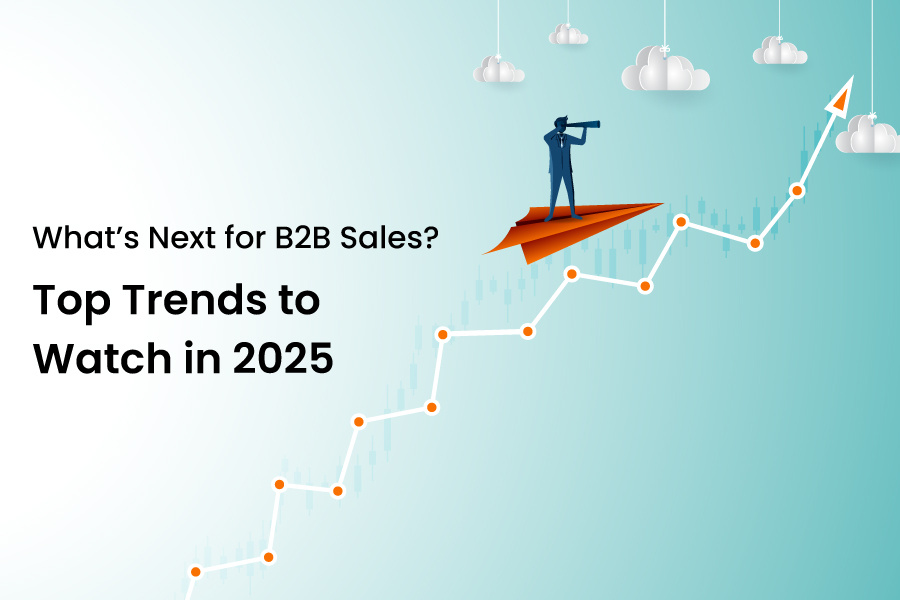What’s Ahead for Wholesalers, Building Materials Suppliers, Industrial Manufacturers, and Consumer Brands.
The B2B sales landscape is evolving rapidly. Technologies are advancing at a crazy speed and buyer expectations are changing faster than ever. B2B customers, like their B2C counterparts, now expect instant fulfillment of their demands, complete visibility and 24x7 access to product details on the device of their choice. This has put immense pressure on the already complex B2B functioning and global supply chains.
As we approach 2025, wholesalers, building materials suppliers, industrial manufacturers, and consumer brands must adapt to stay competitive. With customers now having more information at the touch of their fingertips and more options, going forward, B2B businesses must aim to deliver flawless customer experiences at every step of the process.
Digital Commerce
B2B decision makers are now transitioning from relationship-oriented Gen Xers to digital- savvy Millennials. This new generation of B2B buyers demands the same seamless, intuitive experience they enjoy in B2C transactions. Any other format appears obsolete to them.
As Millennials and Gen Z take up the reins from Gen Xers in 2025, digital commerce will account for a significant portion of B2B sales. According to a report by Forrester, B2B e-commerce is projected to reach $3 trillion in sales by 2027, representing 24% of total B2B sales.
When such huge numbers are at stake, integrating digital commerce for B2B operations makes a lot of sense. To deliver a flawless experience, and to achieve greater buyer satisfaction and conversions, B2B businesses must adopt digital commerce and integrate AI-powered search and recommendations into their digital storefront.
Data-Driven Decision Making
With the advent of technologies like recommendation engines that churn loads of data at supersonic speed with laser accuracy, manual selling has gone out of fashion. In the years ahead, major heavy-lifting of historical data, buyer profile etc. will be done at the back end. While suppliers and manufacturers will increasingly leverage customer data to predict demand, optimize pricing, and personalize marketing efforts.
In 2025, businesses that embrace predictive analytics and machine learning will gain a competitive edge. McKinsey research indicates that companies using AI-driven analytics achieve 30% higher forecast accuracy.
Hybrid sales
As in-person meetings regain momentum post-pandemic, hybrid sales models—a blend of digital and face-to-face interactions—are emerging as the norm. By 2025, sales teams will need to master both digital engagement and traditional relationship-building skills. A study by McKinsey highlights that 94% of B2B decision-makers view omnichannel sales models as more effective than pre-pandemic approaches.
AI-Driven Sales Enablement
AI has changed B2B buying and selling at every step of the process. From lead scoring and automated follow-ups to chatbots and sales content recommendations, AI will play an integral role in enhancing productivity and customer satisfaction. According to Hubspot, 65% of high-performing sales teams already use AI to augment their strategies. Using AI to identify high-value leads and tailor outreach strategies, can help B2B businesses ensure their sales reps focus on opportunities with the highest ROI.
Omnichannel Experiences
With a plethora of new manufacturers and suppliers mushrooming, branding has become paramount in the B2B space. Aside from delivering a consistent user experience across all touchpoints—whether interacting with a sales rep, browsing an online catalog, or reaching out for post-sales support—a centralized cross-channel strategy ensures your customers receive your brand the way you want them to.
Supply Chain Visibility
Post-covid global B2B businesses realized the immediate need for transparent, agile supply chains. For industrial manufacturers and wholesalers, offering end-to-end visibility and accurate delivery timelines will become a competitive necessity. A study by Global Logistics Connections Inc. says that “by 2025, advanced data analytics tools, supported by AI and the Internet of Things (IoT), will provide real-time visibility and predictive insights.”
Personalized Buyer Journeys
With truckloads of content presented to the customer everyday, the only way for B2B companies to ensure engagement is through personalization, by presenting the right offering to the customer at the right time in the right manner. Data has enabled in-depth and accurate analysis of the target customers. In 2025, personalization will be key to winning and retaining customers. Leveraging CRM data to deliver tailored product recommendations, pricing, and marketing messages will be crucial. Implementing personalization is already delivering promising results. A report from Boston Consulting Group shows that companies implementing personalization achieve revenue increases of 6-10%.
Growing Importance of Partner Ecosystems
Collaborative partnerships and ecosystems are redefining B2B sales. By 2025, successful wholesalers and manufacturers will co-innovate with partners to deliver bundled solutions and shared value. Research by IDC forecasts that 60% of B2B companies will rely on ecosystem partnerships for 50% of their revenue by 2026.
Upskilling Sales Teams
With technology driving much of the sales process, the role of sales professionals is evolving. By 2025, B2B sales teams will need skills in data analysis, digital engagement, and consultative selling to meet the demands of modern buyers. LinkedIn’s Workforce Learning Report indicates that 94% of employees would stay longer at companies investing in their career development.
The B2B sales landscape in 2025 will be defined by technology, sustainability, and customer-centricity. For wholesalers, building materials suppliers, industrial manufacturers, and consumer brands, staying ahead means embracing digital transformation, fostering innovation, and delivering unparalleled customer experiences. By adapting to these trends, businesses can not only survive but thrive in the evolving marketplace.
References:
2022 B2B e-commerce forecast, US
Smartening-up-with-artificial-intelligence.ashx str 9
B2B sales: Omnichannel everywhere, every time | McKinsey
The State of AI In Business and Sales [New 2024 Data & Statistics
Profiting from Personalization
IDC FutureScape: Worldwide Future of Industry Ecosystems 2022 Predictions | IDC Blog



